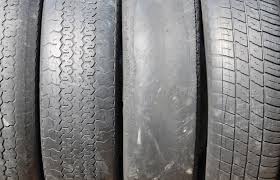Introduction
Wheel alignment is a critical aspect of vehicle maintenance that ensures a car's wheels are set to the optimal angles, as specified by the manufacturer. Proper alignment improves vehicle handling, increases tire longevity, and enhances overall safety. But how did wheel alignment evolve to become an essential part of automotive care? Lets take a deeper look!

An Early Alignment Machine. Source: https://www.wisconsinhistory.org/Records/Image/IM17276
The Early Days of Automobiles
In the early 1900s, automobiles were a BRAND NEW mode of transportation. These early vehicles were often simple and rugged, and wheel alignment was not a primary concern. The rough and uneven roads of the time necessitated frequent adjustments to the wheels and suspension systems to maintain ride quality and vehicle stability.
The Advent of Standardized Roads
Let'sAs the 20th century progressed, road conditions began to improve significantly. The development of better road infrastructure highlighted the need for more precise wheel alignment, because our cars were moving with more speed than ever before. Vehicle manufacturers started to recognize that proper alignment could enhance driving comfort, reduce tire wear, and improve safety.
The First Alignment Machines
The first alignment machines appeared in the 1920s and 1930s. These early machines were relatively primitive, often relying on simple mechanical principles to measure and adjust wheel angles. Think of the "string method" you can see now on YouTube! Mechanics used basic tools like strings, plumb bobs, and levels to ensure the wheels were properly aligned. Although rudimentary by today’s standards, these methods marked the beginning of systematic wheel alignment.
Post-War Advancements
After World War II, the automotive industry experienced a boom. With the increasing popularity of cars, the need for better alignment equipment became apparent. During this period, significant advancements were made in alignment technology. The introduction of optical alignment machines allowed for more precise measurements. These machines used light beams and mirrors to check the alignment of the wheels, providing mechanics with more accurate data to make adjustments.
The Digital Revolution
The 1970s and 1980s saw the advent of computer technology, which revolutionized many aspects of automotive maintenance, including wheel alignment. Digital alignment machines began to emerge, offering unprecedented accuracy and ease of use. These machines utilized sensors and computer software to measure wheel angles and provide real-time data. This technological leap greatly improved the efficiency and precision of wheel alignment services.
Modern Alignment Technology

The Importance of Wheel Alignment Today
Proper wheel alignment is crucial for modern vehicles, which are designed with precise engineering specifications. Misaligned wheels can lead to uneven tire wear, poor fuel efficiency, and compromised handling. Regular alignment checks are essential to ensure a vehicle remains safe and performs optimally.
What Can Gyraline Do?
Gyraline is the most recent innovation in wheel alignment tech. Ditching the massive rack, the most recent development of Gyraline allows a toe check in under 60 seconds. Using multiple sensors fused together, Gyraline's most advanced offering can check toe, camber, caster, and Ackerman quickly with high precision.
Leave a comment if you found this blog post interesting or have your own wheel alignment story!
Author: Sam Henao
Last Updated: July 11, 2024




